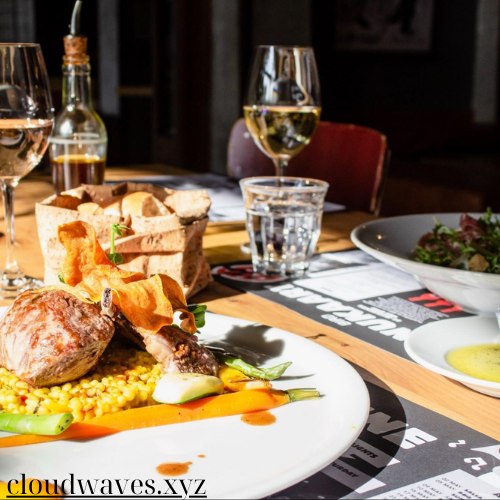Wine Styles and Food Pairings
Premium Wine Styles and Pairings: Elevate Your Tasting Experience
Introduction: The Art of Wine Pairing
Wine is more than just a drink; it’s an experience that brings out the best in every meal, conversation, and celebration. For those looking to elevate their tasting experience, understanding premium wine styles and pairings is key. From rich reds to crisp whites, the right pairing can enhance flavors and create memorable dining moments.
1. Exploring Premium Wine Styles
Rich and Bold Reds: Cabernet Sauvignon & Syrah
Cabernet Sauvignon, often referred to as the “king of red wines,” offers deep flavors of blackcurrant, tobacco, and cedar. It’s a powerful wine that pairs beautifully with hearty dishes like steak, lamb, and even strong cheeses. Syrah, on the other hand, brings spicy notes of black pepper and dark fruits, making it ideal for pairing with grilled meats or barbecue.
Elegant Whites: Chardonnay & Sauvignon Blanc
Chardonnay, a versatile white wine, can range from creamy and oaky to crisp and fruity, depending on where it’s made. Its buttery texture and vanilla notes pair well with rich dishes like lobster, roast chicken, and creamy pasta. Sauvignon Blanc, known for its zesty acidity and citrus flavors, is a refreshing option that pairs beautifully with lighter dishes like salads, seafood, and goat cheese.
Luxurious Sparkling Wines: Champagne & Prosecco
No premium wine experience is complete without the sparkle of Champagne. This elegant wine pairs perfectly with caviar, oysters, and even fried foods, where its bubbles cut through the richness of the dish. Prosecco, a more affordable but equally delightful option, pairs wonderfully with fruit-based desserts, light appetizers, or simply on its own for a celebration.
2. Mastering the Art of Wine Pairings
Balancing Bold Flavors
One of the golden rules of wine pairing is matching the intensity of the food with the wine. Bold, full-bodied wines like Cabernet Sauvignon require equally robust dishes. Pairing a rich, bold wine with delicate food can overwhelm the dish, so it’s best to serve it alongside strong, flavorful options like roasted meats or aged cheeses.
Enhancing Light Dishes
Lighter dishes, such as seafood or vegetable-based meals, call for wines with higher acidity and lighter bodies. A crisp Sauvignon Blanc, for example, will complement the freshness of a garden salad or a seafood platter, enhancing the natural flavors without overpowering them.
Matching Sweetness with Sweetness
When it comes to desserts, it’s essential to match the sweetness level of the wine with the dish. A sweet wine like Sauternes pairs exquisitely with foie gras or blue cheese, while a lighter Moscato d’Asti is perfect for fruit tarts and sorbets.
3. Discovering Regional Pairings
Old World Wines: France, Italy, and Spain
Old World wines from regions like Bordeaux, Burgundy, and Rioja have long been associated with tradition and high quality. These wines often have earthy, mineral-rich profiles that pair beautifully with classic European dishes like French duck confit, Italian pasta with truffles, or Spanish tapas. Understanding the terroir (the land and climate that influence a wine’s flavor) is essential to appreciating these complex wines.
New World Wines: California, Australia, and South Africa
In contrast, New World wines from regions like Napa Valley, Australia’s Barossa Valley, or South Africa’s Stellenbosch tend to be fruit-forward and bolder in flavor. These wines pair well with modern dishes like spicy Asian cuisine, fusion foods, and grilled vegetables, showcasing their vibrant flavors.
4. Elevating Your Tasting Experience
Create the Perfect Atmosphere
To truly elevate your wine tasting experience, it’s important to set the right ambiance. Select high-quality glassware that enhances the aroma and flavor of each wine, and make sure the wines are served at the appropriate temperature. Red wines are best served slightly below room temperature (60–68°F), while white wines should be chilled (50–60°F).
Experiment with Pairings
Don’t be afraid to step outside traditional pairings. For instance, Champagne with fried chicken, or a full-bodied red with dark chocolate, can create surprising and delightful flavor combinations. Wine tasting is as much about personal preference as it is about rules, so experimenting is part of the fun.
Focus on the Senses
When tasting premium wines, engage all your senses. Look at the color, swirl the wine to release its aromas, and take a moment to breathe in the scents. Pay attention to how the flavors evolve on your palate – the initial taste, the mid-palate experience, and the finish. This mindful approach enhances your appreciation of both the wine and the food.
Conclusion: A Journey of Flavor and Elegance
Whether you’re a seasoned connoisseur or just beginning your wine journey, understanding premium wine styles and pairings will elevate your tasting experience. From the rich, bold reds of Bordeaux to the crisp whites of New Zealand, each wine tells a story that’s amplified when paired with the right dish. Take the time to explore, experiment, and enjoy this sensory adventure that connects wine lovers across the globe.
Final Thought
Premium wine pairing is an art, but it’s also an opportunity for exploration and enjoyment. Allow your palate to guide you through this experience, discovering new combinations that delight and inspire. After all, wine is meant to be savored and shared, elevating both the meal and the moment.

